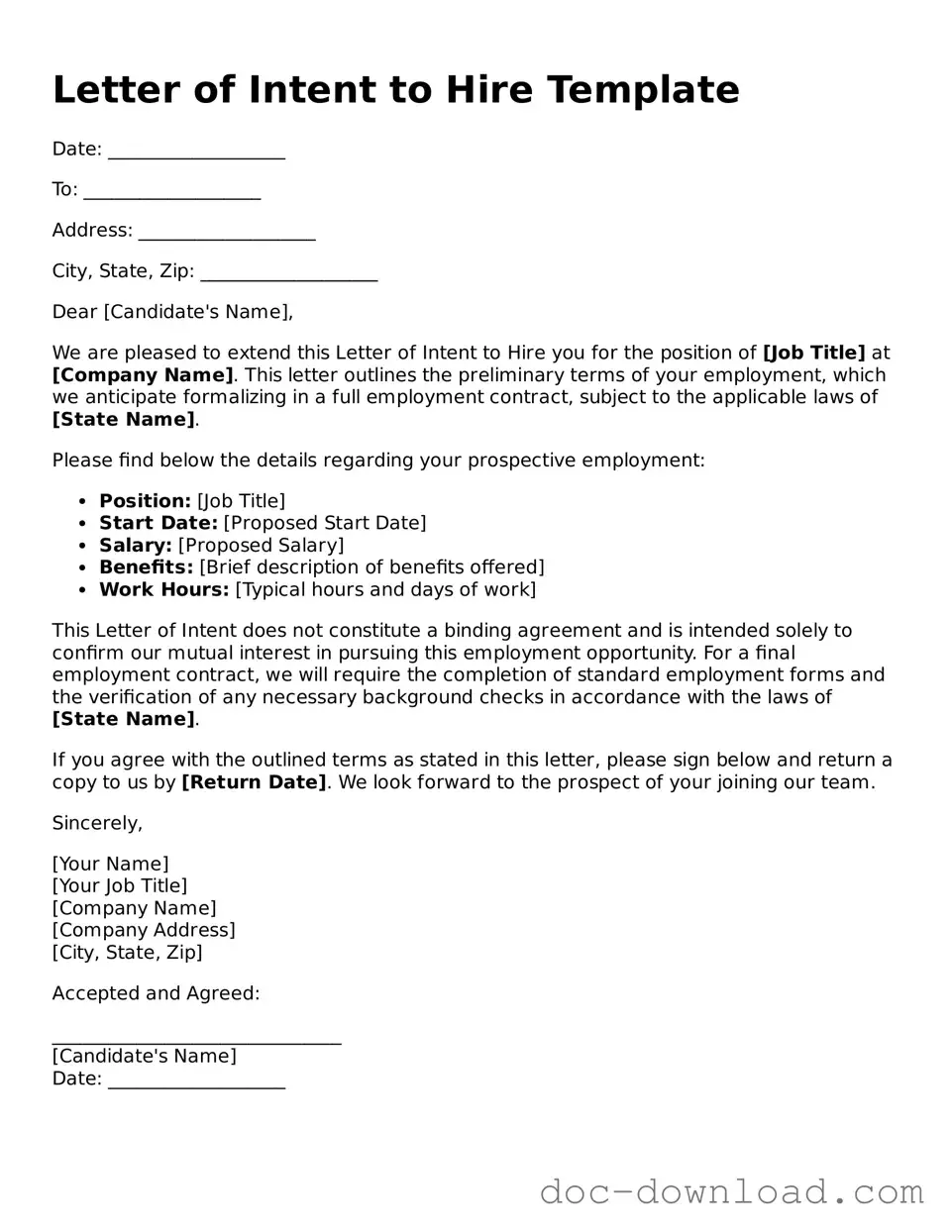The Letter of Intent (LOI) is often compared to a Memorandum of Understanding (MOU). Both documents serve as preliminary agreements that outline the intentions of the parties involved. An MOU, like an LOI, is not legally binding and is typically used to clarify the terms before a formal contract is drafted. It helps both parties understand their commitments and expectations, fostering a clear communication channel as they move forward.
Another document similar to the Letter of Intent to Hire is the Offer Letter. While an LOI expresses intent to hire, an Offer Letter is a formal proposal that includes specific terms of employment, such as salary, benefits, and start date. The Offer Letter is usually binding once accepted, making it a crucial step in the hiring process. It solidifies the agreement and provides the candidate with essential details about their new role.
The Non-Disclosure Agreement (NDA) shares similarities with the LOI in that both can serve to protect sensitive information. While the LOI outlines the intent to hire, an NDA ensures that any confidential information exchanged during the hiring process remains private. This is particularly important in industries where proprietary information could be at risk if not adequately safeguarded.
The California Homeschool Letter of Intent is a formal document that parents submit to notify the state of their decision to homeschool their children. This letter serves as an essential step in complying with California's educational regulations. Understanding its requirements and implications is crucial for families choosing this educational path. For more detailed information, you can visit hsintentletter.com/california-homeschool-letter-of-intent-form.
A Term Sheet is another document that aligns closely with the Letter of Intent. Typically used in business transactions, a Term Sheet outlines the key terms and conditions of an agreement before the final contract is drafted. Like an LOI, it serves as a roadmap for negotiations, helping parties agree on essential elements before committing to a legally binding contract.
Similarly, a Partnership Agreement often shares characteristics with an LOI. Both documents lay the groundwork for future collaboration, detailing the intentions and roles of each party. A Partnership Agreement, however, is more comprehensive and legally binding, specifying the terms of the partnership, profit sharing, and responsibilities, while the LOI focuses on the intent to form a partnership in the first place.
The Employment Contract can also be likened to the Letter of Intent to Hire. While the LOI indicates a desire to employ, the Employment Contract is the formal document that outlines the rights and obligations of both the employer and employee. It includes details about job responsibilities, compensation, and termination conditions, making it a crucial step that follows the LOI.
Another related document is the Statement of Work (SOW). While the LOI expresses intent to hire, an SOW outlines specific deliverables, timelines, and responsibilities for a project. Both documents aim to clarify expectations, but an SOW is often more detailed and project-focused, whereas an LOI is broader and more about the intent of the relationship.
The Proposal is another document that shares similarities with the LOI. A Proposal outlines a plan or offer for services, often in response to a request from a potential client. Like an LOI, it conveys intent but is usually more detailed in terms of what is being offered, including pricing and timelines. Both documents serve to initiate discussions and set the stage for further negotiations.
Finally, a Confidentiality Agreement can be compared to the Letter of Intent to Hire. Both documents help protect sensitive information shared during negotiations. While an LOI indicates a desire to hire, a Confidentiality Agreement ensures that any proprietary information disclosed during the hiring process remains confidential, thus fostering trust between the parties involved.
